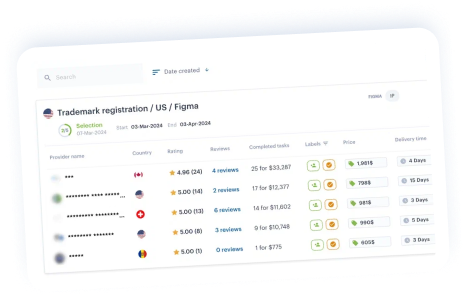By: Stephen Yang, registered attorney at IP March, China.
Utility model is a type of intellectual property right that is gaining popularity in China. Unlike patents, utility models provide a quicker and less expensive way for inventors to protect their innovative products and technologies. In this article, we will delve into the world of utility models in China, exploring what they are, how they differ from patents, and their advantages and limitations for inventors. We will also provide some tips for those who are considering filing for a utility model in China.
Contents
1. What can be registered as utility model in China?
2. Why can you be refused to register utility model?
3. The process of utility model registration in China
4. Documents required for registering utility model in China
5. Opposition process in China
6. Costs of utility model registration in China
7. Particularity of a utility model registration in China
1. What can be registered as utility model in China?
Utility model is one of the three types of patent rights, i.e., invention, utility model and design, offered by the Chinese patent law. Therefore, it is called utility model patent. A utility model means any new technical solution relating to the shape, the structure, or their combination, of a product, which is fit for practical use. In other words, utility model patents protect products, but not methods or use. The product can be a physical product or a system. A Chinese utility model has a patent term of 10 years counted from the filing date. No renewal or extension is possible. In comparison an invention patent has a term of 20 years.
A utility model in China should have novelty, inventive step and practical applicability. The novelty standard for a utility model is the same as that for an invention patent, which means that the technical solution of the utility model should be new. However, a utility model patent has a lower standard for inventive step than that for an invention patent. Generally speaking, an inventive step means, the technical solution is not obvious as compared with the prior art and can produce advantageous technical effects.
2. Why can you be refused to register utility model?
There is no substantive examination for utility model in China and hence it is highly likely that an applicant will get a utility model patent granted. However, it is not a simple registration system. A utility model application must go through what is referred to as “preliminary examination”, which not only includes formality examination but also includes examination for any obvious substantive defects, such as definition of invention, violation of laws, non-patentable subject matter, foreign filing license, obvious lack of unity, obvious introduction of new matter, etc. If the utility model application does not pass the preliminary examination, it will be rejected.
As mentioned above, there is the limitation on subject matter that can be protected by a utility model patent. A method or use is not allowable subject matter to be protected by a utility model, such as manufacturing processes of a gear, method of communication, method of treating metal, data processing method. Therefore, it is not allowed to claim a method or use in a utility model. In many cases, it is not allowed to have method or use features in a claim even if the subject of a claim is a product.
Moreover, no patent right can be granted for any invention that is contrary to the laws or social morality or that is detrimental to public interest, such as gambling equipment, drug-taking tools, devices for forging banknotes.
3. The process of utility model registration in China
After a utility model patent application is filed with China National Intellectual Property Administration (CNIPA), it goes through preliminary examination, as mentioned above. During preliminary examination, there may be one or more office actions issued by the examiner. When the examiner finds the application complies with the relevant provisions, a Notice of Grant is issued. The average pendency for utility model applications is about six months. After the applicant pays the necessary fees, CNIPA will announce the grant of the patent right and publish the utility model patent. The utility model patent can be enforced as of this date.
It is to be noted that a utility model patent application can be a Chinese patent application or a Chinese national phase application of a PCT application. Upon national phase entry in China, an applicant can choose to enter national phase in China as an invention patent application or a utility model patent application, but not both.
It is also to be noted that a utility model patent application can claim priority from a previously first filed utility model patent application or an invention patent application. It can also serve as the priority application for later filed utility model patent applications or invention patent applications.
4. Documents required for registering utility model patent in China
For filing a utility model patent application in China, the following information/documents are needed:
- Name(s), address(es), and nationality(ies) of applicant(s);
- Inventor(s)’ name(s) and the nationality of the first inventor (and the ID number, if the first inventor is a Chinese Citizen);
- Priority information and a copy of the certified priority document;
- A copy of the assignment of priority right, if the applicant of Chinese utility model application is different from that of the priority application; and
- A scanned copy of executed Power of Attorney
- Description, claims, abstract, and drawings.
The description, claims abstract and text in the drawings must be translated into Chinese language, at the time of filing. If the utility model application is filed as a national phase of a PCT application, under the current practice, it is not possible to enter national phase in China first and file the Chinese translation later.
In addition, unlike the filing requirement for an invention patent application, a utility model patent application must have at least one drawing. Otherwise, the applicant cannot even get a filing receipt. The drawing(s) must show the shape, structure or their combination of the product.
5. Opposition process in China
There is no opposition process in China before a patent is granted. However, on or after the day a patent is granted, anyone could file a request for invalidating the patent. There is no deadline for filing a request for invalidation. The request should be filed with the patent re-examination and invalidation department of CNIPA.
During the invalidation proceeding, all the patentability standards and other substantive requirements for granting a patent right are examined. The party requesting the invalidation should submit grounds for invalidation, evidence for each ground and observations. The patentee has a chance to make a response, usually within one month. The CNIPA forms a panel of three to five examiners and usually holds an oral proceeding. After oral proceeding is concluded, the CNIPA makes an invalidation decision. There are three types of invalidation decisions: patent right completely invalid, patent right partially invalid and patent right maintained valid. If any party is not satisfied with the CNIPA’s invalidation decision, it may appeal to court. There are usually two levels of courts above CNIPA.
6. Costs of utility model registration in China
Official fees in relation to utility model patents in China:
| Application: | |
| Application fee | CNY500 |
| Extension fee for late national phase entry of PCT application | CNY1,000 |
| Claiming priority, each priority | CNY80 |
Additional charge for specification (including drawings)
|
CNY50 CNY100 |
| Additional charge for claims, each claim from the 11th | CNY150 |
| Annuities: | |
|
CNY600 |
|
CNY900 |
|
CNY1,200 |
|
CNY2,000 |
| Others: | |
| Request for re-examination | CNY300 |
| Request for patent right evaluation report | CNY2,400 |
| Request for invalidation of utility model | CNY1,500 |
| Change of bibliographic data | CNY200 |
The utility model registration cost in China via the iPNOTE platform starts from as low as $600, which includes all government fees as well as document preparation. Find the best Chinese utility model attorney on iPNOTE.
7. Particularity of utility model registration in China
An applicant may file, on the same day, a utility model application and an invention application relating to an identical invention. The applicant can get a utility model patent relatively fast. When the invention application is ready to be granted, if it has the same scope of protection, the applicant is allowed to abandon the granted utility model and choose to have an invention patent granted. If the invention and the utility model have different scope of protection, the applicant can keep both patent rights.
By adopting this strategy, the applicant could obtain a patent right relatively early and get an “extra” period of patent protection, before obtaining an invention patent right. As the cost of prosecuting and maintaining a utility model is far less than that of an invention, filing two applications will not significantly increase the cost.
It is to be noted that this strategy works only if the subject matter is suitable for protection by a utility model patent. If an applicant tries to protect a method only or a new material, it cannot get protection by a utility model patent.
8. Final thoughts
Protecting minor improvements. As a utility model patent has lower requirements for inventive step, it is suitable for protecting less inventive inventions or minor improvements. For exactly the same reason, a utility model patent may not be easily invalidated.
Protecting products with shorter lifecycle. As a utility model can be obtained relatively fast, it is ideal for protecting products with short lifecycle. The 10-year term of a utility model patent may be long enough for such products.
Need for quick protection. If infringing activities are going to happen or have happened in China, an applicant can obtain a patent right by getting a utility model relatively quickly and assert the utility model patent right to stop the infringing activities at an early stage. If the applicant files an invention patent application, it may take about 20 months before the applicant can have it granted and enforce the patent right.
It is to be noted that there is an additional obligation when a utility model patent is enforced. A patent right evaluation report produced by CNIPA may be required by relevant authorities or e-commerce platforms in litigation or taking-down actions, as preliminary evidence about patent validity.
***
Have questions about utility model registration in China? Contact IP March via IPNOTE.
Sign up for free, and we’ll help you solve any IP problem.
Unlock the future of creativity with our application design online services. Transform your ideas effortlessly with our innovative online design application. Try it today and see the difference!







